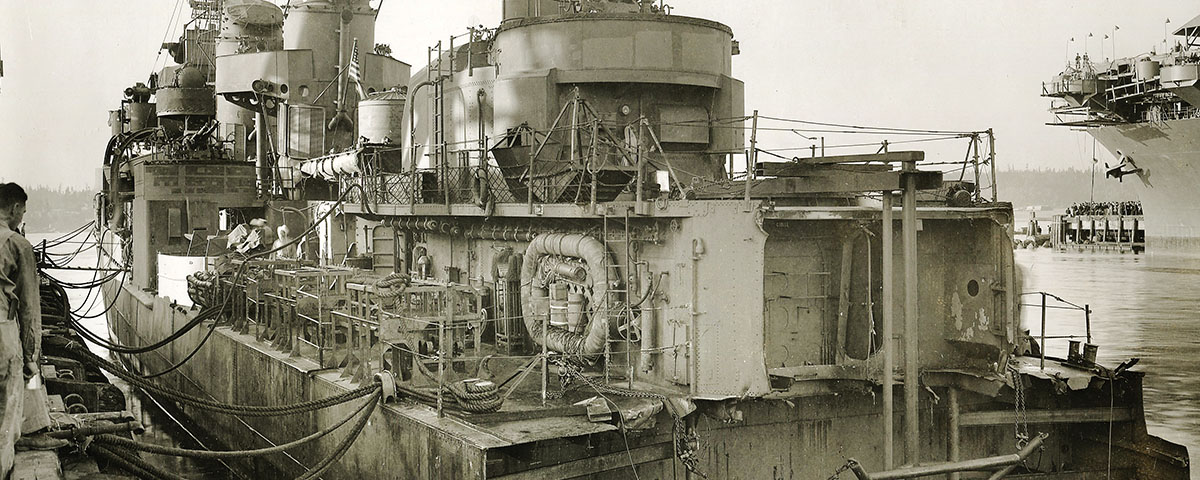The ship was saved. But its 75-foot stern sank in the pitch-black, fog-shrouded waters off the Aleutians, lost along with 70 men.
Nearly 75 years later, scientists from the University of California San Diego’s Scripps Institution of Oceanography and the University of Delaware, working in a partnership called Project Recover, found the missing stern from the destroyer USS Abner Read on July 17.
It was in 290 feet of water off Kiska, an Aleutian island seized by Japan in 1942 in an often-overlooked World War II campaign.
The Abner Read, named for a northern Civil War naval hero, was on patrol near Kiska at about 1:50 a.m., August 18, 1943, when it was rocked by an explosion, probably after hitting a Japanese mine.
The blast ripped a hole in the stern. Staggering in the darkness, some crew members plunged through holes in the deck into the fuel tanks below; the stern sank.
“This was catastrophic damage that by all rights should have sunk the entire ship,” said Sam Cox, director of the Naval History and Heritage Command.
But the destroyer managed to stay afloat and was towed back to the port at Adak, another Aleutian island. After repairs at Puget Sound, Washington, the destroyer returned to war, only to be destroyed by a kamikaze dive-bomber in November 1944 in Leyte Gulf in the Philippines.
The Project Recover mission was the first to thoroughly investigate wrecks from the battles of Kiska and Attu, Alaskan islands occupied by Japan from June 1942 through August 1943.
A multibeam sonar mounted on the search ship Norseman II found a likely spot for the Abner Read’s stern. The team dispatched an unmanned mini-sub to capture the wreck on live video. “There was no doubt,” said Eric Terrill, a Scripps oceanographer and leader of the expedition. “We could clearly see the broken stern, the gun, and rudder control, all consistent with historical documents.”
“We take our responsibility to protect those wrecks seriously,” Cox said. “They’re the last resting place of American sailors.”





